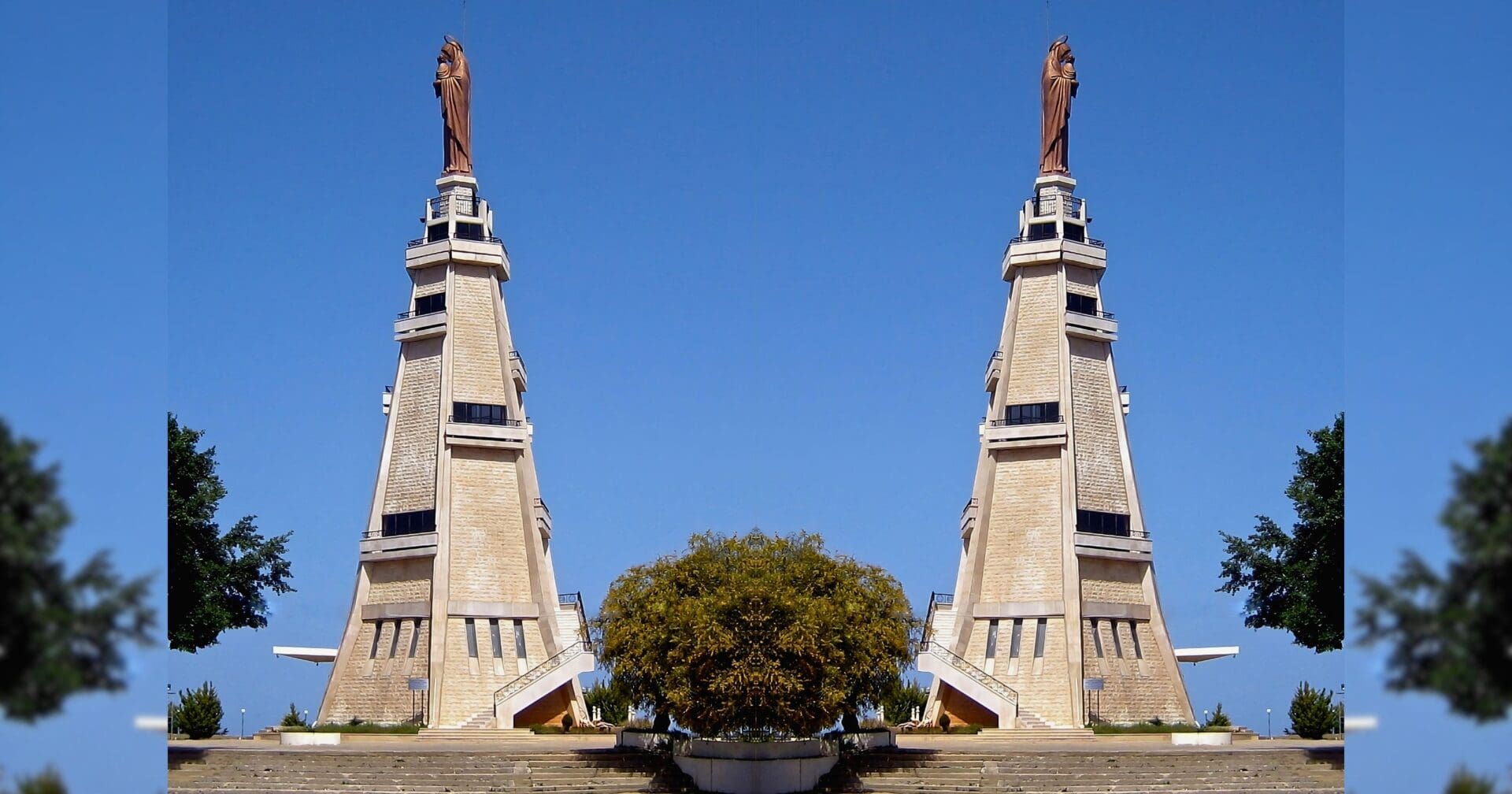Our Lady of Waiting is a Melkite Greek Catholic Marian shrine in Maghdouché, Lebanon.
Pious tradition holds the grotto there was where Mary rested while Jesus was preaching in Tyre and Sidon.
“Again he left the district of Tyre and went by way of Sidon to the Sea of Galilee, into the district of the Decapolis.” – Mark 7:31
In the earliest days of the Church, locals and pilgrims alike venerated the sacred cave. Saint Helena helped establish a chapel there, naming it “Our Lady of Awaiting.”
Around the 7th century, the Maghdouché were facing persecution from the Islamic caliph and retreated to Mount Lebanon. For nearly a thousand years, the caves location was lost.
They returned to their land in the 16th century, but had trouble relocating the sacred cave.
It wasn’t until September of 1721 when the goat of a young shepherd boy fell into a well-like hole that it was rediscovered. Wanting to save his goat, he fashioned a rope made of vines and descended into it.
As he was descending, the rope broke and he fell. When his eyes adjusted, he was able to make out the faint glimmer of a golden object – Saint Helena’s icon of the Mother and Child.
Ever since his discovery, the cave of Our Lady of Awaiting has been open to the public, becoming a major pilgrimage site in Lebanon.
Magdhdouché’s residents built a church and a modern tower that overlooks the Mediterranean, offering visitors a bird’s-eye view of Sidon and the lush hills, valleys and citrus groves beyond.
On September 8th, the Feast of the Nativity, grand festivities are held to commemorate the rediscovery of the cave.
Photo credit: Philippe48 via Wikimedia Commons

















